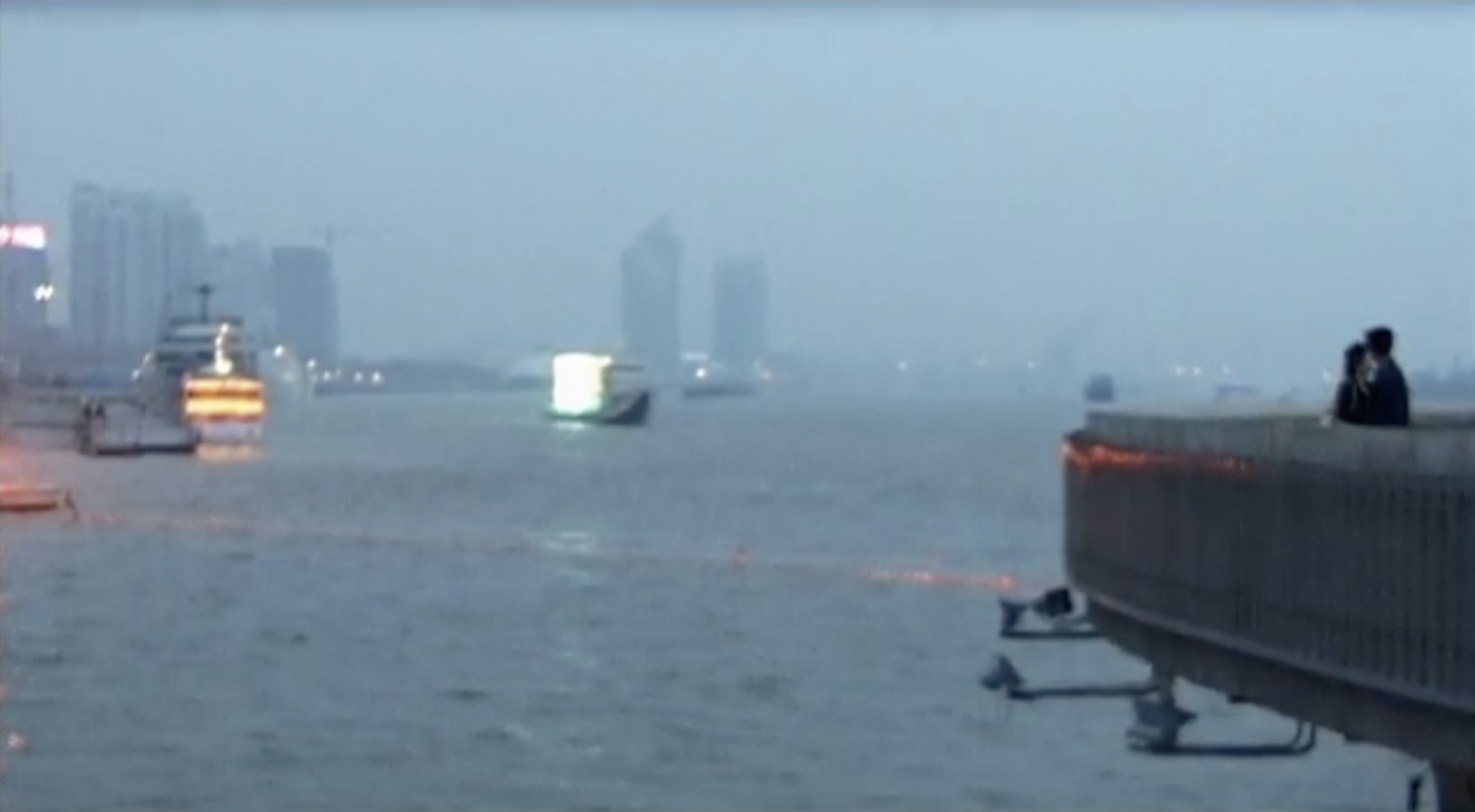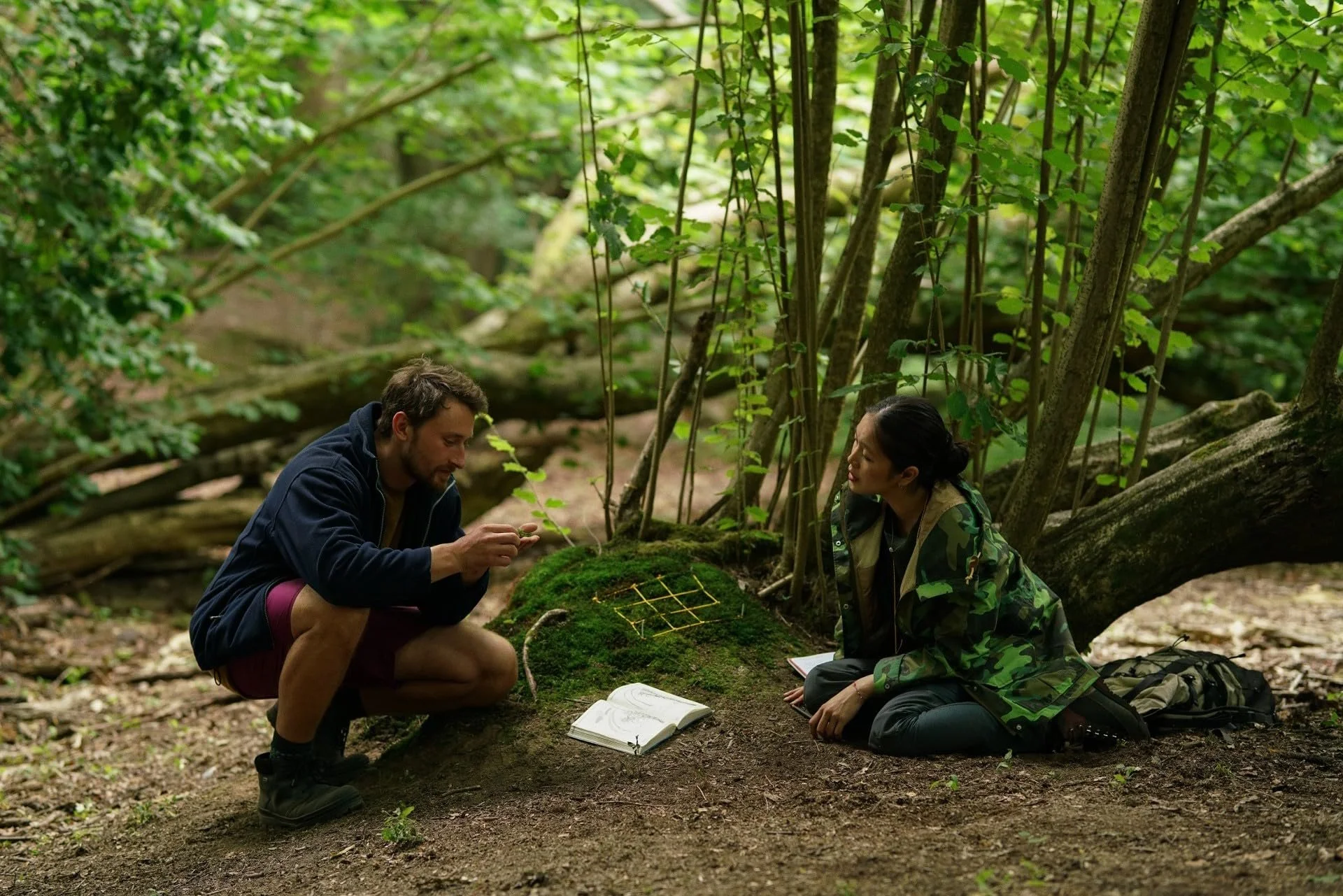Film Review: Boundless Within a Stone's Throw: In the Face of Nature, Cities May Just Be Chance Encounters
中文版:咫尺亦无限——在自然面前,城市或许只是偶然的邂逅
Critic: 张露婷Luna Zhang
此次薄荷紫华语电影节观看了两部影片,一部短片《上海夜幕低垂》,一部长片《小世界》。前者是香特尔·阿克曼为2017年的集体影片《世界的状态》(L'état du monde)所作;后者由比利时导演巴斯·德沃斯执导,于2023年柏林国际电影节的遇见单元首映,并斩获了该单元的最佳影片奖。
巧合的是,虽然一个用长镜头与同期声书写人们日常可见的城市生活,另一个则用更为系统而繁复的视听手段带领人们回归自然。但两者无疑都通过作者电影的形式为观者展示了一个厚实而细密的当下。
《上海夜幕低垂》由上海摩天大楼和一艘漂浮的船的长镜头组成,船上展有巨型消费产品和一些人们熟悉的图像,比如达·芬奇的《蒙娜丽莎》。天色将暗时,镜头从餐厅、江边攀谈的人群身上滑过,然后用一段长达十分钟的长镜头,将黄浦江边变换不断的电子广告屏呈现在大众眼前——鲜艳的城市标语,大幅的艺术画作等等。与此同时,汽笛声并人语声交织,乐器演奏声同样不绝,集体勾勒出饱满而具象的城市点滴。因此,影片是开放而充满呼吸感的。透过导演的镜头,我们仿佛不是置身屏幕外的存在,而是切身站在江边观看眼前的一切。香特尔强迫我们目睹时间的经过,并感受时间的流逝。
《上海夜幕低垂》剧照
《小世界》讲述一位罗马尼亚移民工人,在决定返还故土前夕,将冰箱里剩余的蔬菜烩作一锅汤分赠亲友之余,偶遇一位华裔生物科学博士,并在她的带领下第一次亲近森林中苔藓近在咫尺而幽深无限的世界。影片开始于钢筋水泥中的交谈,以及企图返回故里寻找归属感的决心,终结于森林间无声的相偎,以及失去名字这一特定性称谓的释然。而声音则先于影像出现,又后于影像消失,以此构筑起完整的叙事。
《小世界》剧照
尽管导演在某次放映后说,这部电影并没有要表达什么深刻的主题,可能就是一些无意义镜头的展示,但是我们都知道,影片最初的创作契机来自于2014年,劳动力市场向罗马尼亚人和保加利亚人开放,大量罗马尼亚工人涌入比利时的社会事件。当人们不用再因为某些限制而长驻在某一块地域,与一个地方的联系也逐渐变得更加流动或者脆弱。这些工人就仿佛森林中的苔藓,无根且随处可见,只有俯身近距离观察,才会洞见其中充斥着活跃、鲜明的细胞。
影片中,女主角shuxiu一出场就谈到自己半梦半醒间失去了为事物命名的能力,完全沉浸在一个“没有名字的世界”,这让她觉得自己“在这儿也在那儿”。作为生物学家,她必须为事物命名——所有事物在被命名之前,似乎都处于一种不存在的状态;而作为生长在异国的华裔,她是否也面临身份认同的缺失,试图从土地中寻找“根源”。因此,在shuxiu的潜意识里,一直渴望抛弃这些,与世界建立起真正的联结。无论是移民工人心中“故土”的缺位,抑或是生物博士面对失序的挣扎,导演直面了人无根的感受,并默许了这一切的无解。
所谓故乡与归属感,也许并不依托于某一块特定的土地,或某一个特定、强有力的词语,而是一种辽阔自在的心情,一种图像带来的最直观的触动。当人类在这片大地上诗意地栖居,当囤积、储存、聚集和分享种种行为把我们真正定义成人类,一切会超脱时空的限制,真正紧密地相连。
English Version: Boundless Within a Stone's Throw: In the Face of Nature, Cities May Just Be Chance Encounters
Translator: 张雯琪 Wenqi Zhang
At the 2nd edition Mint Chinese Film Festival, I watched two films: the short film "Tombée de nuit sur Shanghaï" and the feature film "Here." The former, created by Chantal Akerman for the 2017 collective film "L'état du monde," while the latter was directed by Bas Devos and premiered in the Encounter section of the 2023 Berlin International Film Festival, winning the Best Film award in that section.
Coincidentally, while one uses long shots and synchronous sound to depict daily urban life, the other employs more systematic and complex audiovisual means to reconnect people with nature. However, both undeniably capture a rich and intricate present moment through the cinematic visions of their creators.
"Tombée de nuit sur Shanghaï" consists of long shots of Shanghai skyscrapers and a floating boat, the boat displaying giant consumer products and familiar images such as Leonardo da Vinci's "Mona Lisa." As night falls, the camera glides over restaurant crowds by the riverbank, then presents the ever-changing electronic advertising screens along the Huangpu River in a ten-minute long shot—bright city slogans, large-scale artworks, and more. Meanwhile, the sound of car horns and human voices intertwine, along with the continuous play of musical instruments, collectively delineating vivid and concrete urban fragments. Therefore, the film is open and breathes with a sense of space. Through the director's lens, we seem not to be observers outside the screen but to be standing by the riverbank witnessing everything before us. Chantal forces us to witness the passage of time and feel its flow.
"Here" tells the story of a Romanian immigrant worker who, on the eve of returning to his homeland, turns the remaining vegetables in his refrigerator into a pot of soup to share with family and friends. He encounters a Chinese biologist and, under her guidance, gets close to the world of moss in the forest, which is close at hand yet infinitely deep. The film begins with conversations amid concrete and steel and the determination to return to find a sense of belonging, and ends with silent snuggling in the forest and the acceptance of losing specific names. Sound precedes images and disappears after them, constructing a complete narrative.
Although the director said after a screening that this film did not intend to express any profound themes, perhaps just showing some meaningless shots, we all know that the initial inspiration for the film came from the events of 2014 when the labor market opened to Romanians and Bulgarians, leading to a large influx of Romanian workers into Belgian society. When people no longer have to stay in a certain area due to certain restrictions, their connection to a place gradually becomes more fluid or fragile. These workers are like moss in the forest, rootless and ubiquitous, only visible when observed closely, revealing active and vivid cells everywhere.
In the film, the protagonist Shuxiu talks about her inability to name things between half-dream and half-awake states, completely immersed in a "nameless world," which makes her feel "here and there." As a biologist, she must name things—before being named, all things seem to be in a non-existent state; and as a Chinese immigrant growing up in a foreign country, she also faces a loss of identity, trying to find "roots" from the land. Therefore, in Shuxiu's subconscious, she has always yearned to abandon these and establish a true connection with the world. Whether it's the absence of "homeland" in the hearts of immigrant workers or the struggles of the bioscientist facing disorder, the director confronts the feeling of rootlessness in people and tacitly accepts the irresolution of it all.
The so-called homeland and sense of belonging may not rely on a specific piece of land or a specific, powerful word, but rather on a broad and free-spirited mood, the most direct touch brought by images. When humans poetically inhabit this earth, when behaviors such as hoarding, storing, gathering, and sharing define us as truly human, everything transcends the limitations of time and space, truly connecting closely.


